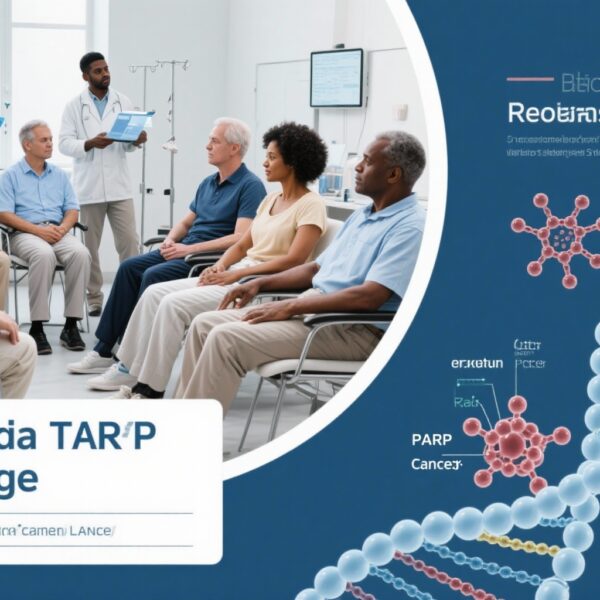Highlights
– The randomized phase 2 MATISSE trial evaluated neoadjuvant nivolumab (NIVO) versus nivolumab plus low‑dose ipilimumab (NIVO+IPI) in 50 patients with resectable cutaneous squamous cell carcinoma (CSCC).
– Pathological response rates at surgery were 55% with NIVO and 80% with NIVO+IPI (major pathological response [MPR] or partial pathological response [PPR]); MPR/PPR was associated with 100% 2‑year disease‑specific survival (DSS).
– Immune‑related grade 3 toxicity was uncommon (12% NIVO; 8% NIVO+IPI), there were no surgical delays, and nine of ten patients who declined standard surgery achieved durable organ preservation after two ICB infusions.
– Early reductions in total lesion glycolysis (TLG) on FDG‑PET/CT may identify candidates for response‑guided treatment de‑escalation.
Background
Cutaneous squamous cell carcinoma (CSCC) is a common skin cancer that for locally advanced, high‑risk, or anatomically challenging tumors often requires extensive surgery and frequently adjuvant radiotherapy (RT), both of which can be mutilating and substantially impact function and quality of life. Immune checkpoint blockade (ICB) targeting PD‑1 has transformed management of advanced CSCC: anti‑PD‑1 antibodies (eg, cemiplimab) produce high objective response rates in unresectable and metastatic disease and are now standard for these settings. Neoadjuvant ICB is an emerging strategy across solid tumors that can downstage disease, increase rates of pathologic complete or major responses, and in some cases allow less extensive surgery or avoid it entirely. Data specifically testing combination PD‑1 plus CTLA‑4 blockade in the neoadjuvant setting for CSCC have been limited; MATISSE addresses this unmet need by randomizing patients to short‑course neoadjuvant nivolumab with or without low‑dose ipilimumab and assessing pathological response at definitive surgery.
Study design
MATISSE is a randomized phase 2 trial (ClinicalTrials.gov NCT04620200) that enrolled 50 patients with stage I–IVa resectable CSCC. Patients were randomized to receive either nivolumab (240 mg intravenously at weeks 0 and 2) or nivolumab given at the same schedule plus a single low‑dose ipilimumab infusion (week 0). Standard‑of‑care (SOC) definitive surgery with or without adjuvant radiotherapy was planned for week 4. The primary endpoint was pathological response rate at the time of SOC (assessed as proportion of viable tumor cells remaining in the surgical specimen), with major pathological response (MPR) and partial pathological response (PPR) prespecified. Secondary endpoints included survival outcomes, safety, surgical outcomes (eg, delay), patient‑reported outcomes among patients who declined surgery, and exploratory biomarker analyses, including changes in FDG‑PET/CT total lesion glycolysis (TLG) as a potential early response biomarker. Median follow‑up reported was 31 months.
Key findings
Pathological responses
Of 50 treated patients, 40 proceeded to standard‑of‑care surgery. Among evaluable surgical specimens, MPR (usually defined in neoadjuvant immunotherapy studies as ≤10% viable tumor, depending on protocol) and PPR rates differed between arms but were clinically meaningful in both.
- Nivolumab alone: 9 of 20 patients (45%) achieved MPR and 2 of 20 (10%) achieved PPR, for an overall pathological response rate of 55%.
- Nivolumab + low‑dose ipilimumab: 10 of 20 patients (50%) achieved MPR and 6 of 20 (30%) achieved PPR, for an overall pathological response rate of 80%.
These results indicate a high rate of deep pathological responses after only two infusions of anti‑PD‑1 with or without a single low‑dose anti‑CTLA‑4 dose. The combination arm showed a numerically higher overall pathological response rate, driven by greater PPR frequency.
Survival outcomes
Remarkably, patients who achieved MPR or PPR experienced excellent oncologic outcomes: 2‑year disease‑specific survival (DSS) was 100% in those with a pathological response. Median follow‑up was 31 months, which, though intermediate, supports durable benefit among responders. The study was not primarily powered to compare DSS between arms, and event numbers were low; thus, caution is warranted in interpreting survival comparisons.
Safety and surgical outcomes
Neoadjuvant ICB was generally well tolerated. Grade 3 immune‑related adverse events occurred infrequently (12% in the NIVO arm and 8% in the NIVO+IPI arm). Importantly, no treatment‑related surgical delays were reported, addressing a key concern for neoadjuvant strategies in potentially curable disease.
Organ preservation and patient‑reported outcomes
Ten patients opted to decline surgery and radiotherapy after completing the neoadjuvant ICB regimen; nine of these ten achieved durable organ preservation with a clinical complete remission after just two ICB infusions. In this small subset, 2‑year DSS was also 100%, and health‑related quality of life measures favored those who avoided surgery — an important patient‑centered outcome that supports the concept of response‑guided de‑escalation in future trials.
Imaging biomarker (FDG‑PET/CT) and response‑guided de‑escalation
Early decreases in total lesion glycolysis on [18F]FDG‑PET/CT correlated with pathological response and were proposed as a noninvasive tool to select candidates for de‑escalation. If validated, an imaging‑guided pathway could permit safe avoidance of surgery in carefully selected patients or limit the extent of resection and adjuvant therapy.
Expert commentary
MATISSE provides compelling evidence that short‑course neoadjuvant PD‑1 blockade, with or without a single low dose of CTLA‑4 blockade, induces deep pathological responses in a substantial proportion of patients with resectable CSCC. The high rates of organ preservation observed among patients who declined surgery — and the excellent survival of pathologic responders — together argue that neoadjuvant ICB can be a transformative strategy for carefully selected patients with functionally or cosmetically consequential tumors.
Biological plausibility for enhanced efficacy with CTLA‑4 plus PD‑1 blockade rests on complementary mechanisms: CTLA‑4 inhibition can broaden T‑cell priming and repertoire, while PD‑1 blockade revives exhausted effector cells in the tumor microenvironment. The MATISSE data, showing higher overall pathological response with a single low‑dose ipilimumab addition, are consistent with this paradigm and echo findings in other tumor types where CTLA‑4 adds incremental benefit when given together with PD‑1 blockade in the neoadjuvant context.
However, several limitations should temper enthusiasm. The trial is phase 2 and modest in size; it was not powered for survival endpoints or definitive comparisons between arms. The follow‑up, while encouraging at a median of 31 months, remains intermediate. Selection bias may have influenced outcomes: patients enrolled in neoadjuvant trials are often motivated, medically fit, and treated in tertiary centers with multidisciplinary expertise. The small cohort of patients who declined surgery and experienced organ preservation is hypothesis‑generating but requires validation in prospective response‑guided protocols with prespecified criteria and rigorous surveillance.
Safety data are reassuring but require broader confirmation, especially because combining CTLA‑4 and PD‑1 inhibitors has historically increased immune‑related toxicity. The use of low‑dose ipilimumab in MATISSE appears to mitigate this risk, aligning with dosing strategies tested in other neoadjuvant trials, but larger datasets are necessary to fully define risk–benefit tradeoffs.
Finally, the integration of an early imaging biomarker (FDG‑PET TLG) is an important advance but needs external validation and standardized thresholds before routine clinical use.
Conclusion
MATISSE demonstrates that brief neoadjuvant nivolumab, with or without a single low‑dose ipilimumab infusion, yields high pathological response rates in resectable CSCC, with excellent disease‑specific survival among responders and the potential to safely de‑escalate or omit surgery in selected patients. Grade 3 immune toxicity was uncommon and did not cause surgical delays. These findings justify larger randomized trials to confirm survival benefits, optimize patient selection, refine imaging and molecular biomarkers, and test formal response‑guided organ‑preservation strategies. If validated, neoadjuvant ICB could become a practice‑changing option that reduces the need for mutilating surgery and preserves function and quality of life for patients with high‑risk or anatomically challenging CSCC.
Funding and clinicaltrials.gov
The MATISSE trial is reported in: Breukers SE et al., Neoadjuvant ipilimumab and nivolumab in resectable cutaneous squamous cell carcinoma: a randomized phase 2 trial. Nat Med. 2025. ClinicalTrials.gov identifier: NCT04620200. Funding details are reported in the original publication.
References
1. Breukers SE, Traets JJH, van Dijk SW, et al. Neoadjuvant ipilimumab and nivolumab in resectable cutaneous squamous cell carcinoma: a randomized phase 2 trial. Nat Med. 2025 Oct 8. doi:10.1038/s41591-025-03943-w. PMID: 41062829.
2. Migden MR, Rischin D, Schmults CD, et al. PD‑1 blockade with cemiplimab in advanced cutaneous squamous‑cell carcinoma. N Engl J Med. 2018;379:341–351.



